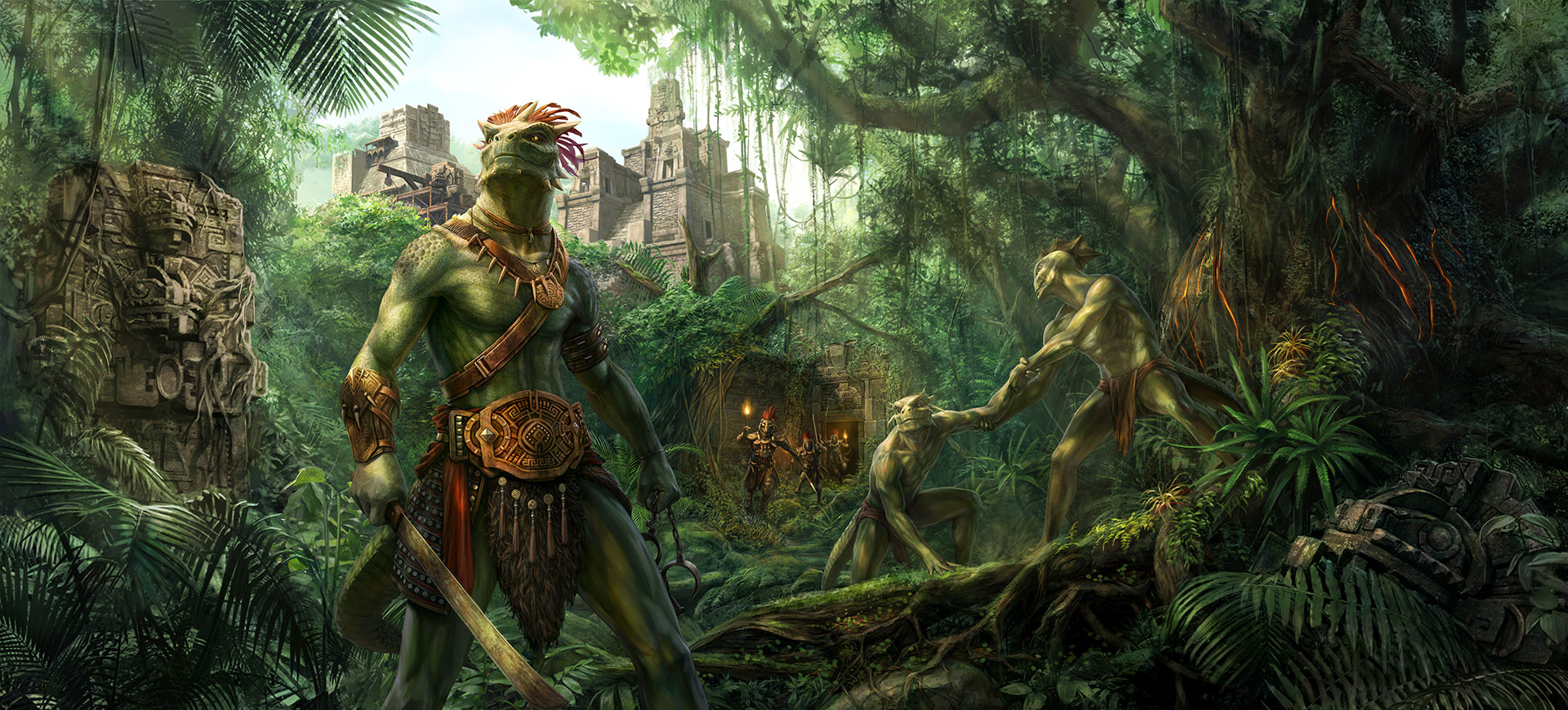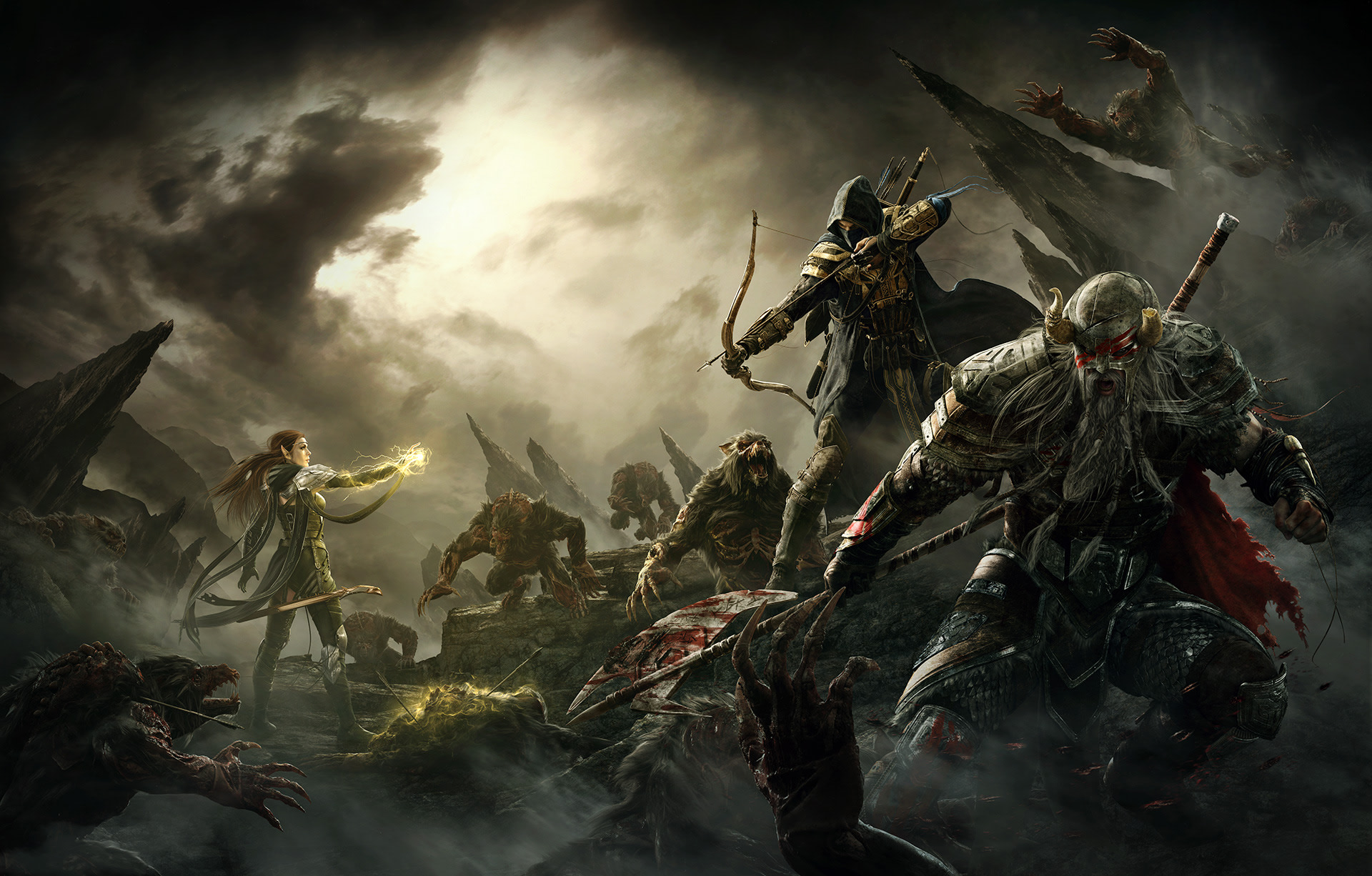The Elder Scrolls Online is one of those games. The role playing game launched April 2014, and found a loyal and ever-expanding audience over the years. By 2021, it had sold 18 million copies of the game, and reported over two million active players per month.

article
The Elder Scrolls Online key art
The art of promotion in its finest form.
Arjan Terpstra
01 Jun 2022 ⋅ 5 min read
The Elder Scrolls Online is one of those games. The role playing game launched April 2014, and found a loyal and ever-expanding audience over the years. By 2021, it had sold 18 million copies of the game, and reported over two million active players per month.
ESO’s Shadow of the Hist update introduced two new dungeons associated with the Argonians, the lizard people depicted here. An official Shadow of the Hist fine art print is available on our store. Follow this link to find out more!
Promotional art
How did this success come about? Promotional art plays an important part in the efforts of studio ZeniMax to get the game to new players. The game has a roster of four content updates a year, and every update introduces new themes, characters, and lore.
Promotional art plays a major role in communicating this new content. Every update has its own key marketing image, used in promotional efforts across the board: social media posts, websites, or print advertisements all show the same image.
This so-called "key art" typically takes up to two months to prepare and execute, and passes a lot of stages before it reaches its final form. This may seem excessive for a single image, but makes complete sense when you know what the image needs to do for the game.
Player excitement
The key art needs to convey a tone of adventure and meaningful character interaction, representative of what players will experience when they log in. Thus generating player excitement for the content updates.
Importantly, it has to do so both for two groups of players. One is new players, who have to get excited about the larger game world: an online high-fantasy world where a lot of social activity and dungeon questing is going on.
The other group is existing players, who care about the new content they will find once the update is live. This means key art needs to highlight this, and show things like new suits of armor a player will find in the game, a new guild, or new dungeons to explore.
Thieving guild
For both sets of players, one thing is essential: the art needs to include figures that the player can imagine themselves inhabiting, doing the things offered to them by the gameplay.
This leads to images like the one below, that was used to introduce a new thieving guild to the players. This image clearly communicates the heisting associated with that guild, the booty you can expect. But also the threats associated with this profession, seen lurking in the background.
The Thieves’ Guild image puts the heisting player characters central. In the back, the inherent danger involved in this operation looms large. An official Thieves’ Guild fine art print is available on our store. Follow this link to find out more!
Homestead was key art to promote an update that launched a new player housing system. An official Homestead fine art print is available on our store. Follow this link to find out more!
Story-driven games
Likewise the Dark Brotherhood is a group of assassins, so the key art for that update naturally depicts a player-character performing an assassination.
A member of the Dark Brotherhood caught in the act of assassination. An official Dark Brotherhood fine art print is available on our store. Follow this link to find out more!
This is a major point of emphasis for the artists at ZeniMax, who push themselves to inject as much narrative as possible into key imagery.
They see their task as "crafting narrative in single image illustrations," and they have a great number of tricks up their sleeve to make that happen.
Requirements
It's important for artists that every image tells its own story. Simple as it sounds, the many requirements to key art make the task daunting. What if a game update has action players themselves don't take part in?
One update for instance tasked you with shutting down supernatural storms, called Harrowstorms. In this scene, a set of enemy characters works on bringing the storm about. See the key art below.
The central scene in the Harrowstorm key art is framed by the two player-characters at the front of the image. An official fine art print of the image is available on our store. Follow this link to find out more!
This trick is called "framing"—the player characters frame a second scene in the background.
Eye movement
A second trick is "designing for eye movement." Artists construct the composition so that the viewer's eye is guided from one object to the next, to help them understand what's going on in one glimpse.
“Frey" is key promotional art for Zenimax Elder Scrolls Online game. An official Frey fine art print is available on our store. Follow this link to find out more!
The female warrior on the left is seeking out new targets for her magic spells. Color coding—see the bright yellow sparking effect—ensures we associate the slain enemy at her feet with actions that took place seconds ago.
Finally the archer clearly points at something that will happen very soon: the demise of another monster, in the left lower corner of the image.
Visual clues
The art thus succeeds in telling the full narrative of this fight. Visual clues indicate what happened in the past, what happens in the present, and what is likely to happen in the future.
It's narrative design at its best: showing the beginning, the middle, and the possible end of a story, all contained within one single image.
The Wolfhunter image promoted two new werewolf-themed dungeons in the game: March of Sacrifices and Moon Hunter Keep. An official Wolfhunter fine art print is available on our store. Follow this link to find out more!





